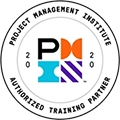Articles and White Papers
Welcome to our Articles and White Papers section, where you will find engaging and relevant topics within your particular area of interest. Browse each program area to read white papers and articles written by our knowledgeable subject matter experts.
 Project Management White Papers and Articles
Project Management White Papers and Articles
 Management and Leadership White Papers and Articles
Management and Leadership White Papers and Articles
 Business Analysis White Papers and Articles
Business Analysis White Papers and Articles
 Lean Six Sigma and Business Process Management White Papers and Articles
Lean Six Sigma and Business Process Management White Papers and Articles
 Collaboration and Inclusion White Papers and Articles
Collaboration and Inclusion White Papers and Articles
For more information on this topic, as well as how Corporate Education Group can help power your organization’s performance, contact us via email or call 1.800.288.7246 (US only) or +1.978.649.8200. You can also use our Information Request Form!


- ©2025 Corporate Education Group, operated by CEG Operating Company, LLC. All Rights Reserved.
Privacy Policy | Terms and Conditions - Corporate Education GroupSM and Learning That Powers PerformanceSM are service marks of Corporate Education Group, Inc., PMI®, PMP®, CAPM®, PgMP®, PMBOK®; and the PMI®; Registered Education Provider logo are registered trademarks of the Project Management Institute, Inc. CBAP® and IIBA® are registered trademarks of International Institute of Business Analysis. All other trademarks mentioned on this site are property of their respective owners. All rights reserved. CEG is an approved Authorized Partner within the Blanchard Authorized Partner Program and is licensed to market, sell, and train SLII®.
